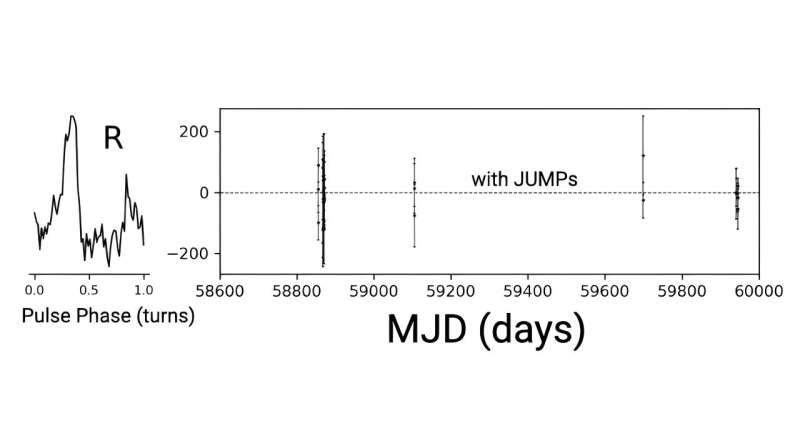June 4, 2024 report
This article has been reviewed according to Science X's editorial process and policies. Editors have highlighted the following attributes while ensuring the content's credibility:
fact-checked
preprint
trusted source
proofread
Eight new millisecond pulsars discovered with FAST

Using the Five-Hundred-meter Aperture Spherical radio Telescope (FAST), astronomers from the Guizhou University in China and elsewhere have discovered eight new millisecond pulsars in the globular cluster NGC 6517. The finding was reported in a research paper published May 28 on the pre-print server arXiv.
Pulsars are highly magnetized, rotating neutron stars emitting a beam of electromagnetic radiation. The most rapidly rotating pulsars, with rotation periods below 30 milliseconds, are known as millisecond pulsars (MSPs). Astronomers assume that they are formed in binary systems when the initially more massive component turns into a neutron star that is then spun up due to accretion of matter from the secondary star.
Now, a team of astronomers led by Guizhou University's Dejiang Yin reports the detection of eight new MSPs. The new pulsars were identified in a core-collapsed globular cluster (GC) known as NGC 6517, which hosts nine known pulsars. The observations that led to detection were carried out using the central beam of the FAST 19-beam receiver covering a frequency range of 1.0–1.5 GHz, as part of the "Globular Cluster FAST: A Neutron-star Survey" (GC FANS).
"Ranking third among the GCs with the most pulsars in the FAST sky, NGC 6517 is one of the pulsar search targets with the highest chance for further discoveries. Motivated by this potentially significant pulsar population, in this work we present the discovery of an additional eight pulsars in NGC 6517, bringing the total number to 17 in this cluster," the researchers explained.
The newfound pulsars received designation PSR J1801–0857K to R (or NGC 6517K to R) and all have spin periods shorter than 10 milliseconds. The discovery makes NGC 6517 the globular cluster with the highest number of known pulsars in the part of the sky covered by FAST.
All the newly found MSPs are isolated, which makes NGC 6517 the third GC known with the highest fraction of isolated pulsars—94%. Detected in 2011, PSR J1801−0857 is so far the only binary system in this cluster.
According to the paper, the newly identified millisecond pulsars have dispersion measures between 182.38 and 185.74 pc/cm3. The astronomers noted that together with the previously known pulsars, the difference between the maximum and minimum dispersion measures of pulsars in NGC 6517 is approximately 11.2 pc/cm3. This makes NGC 6517 the GC with the second largest spread in pulsar dispersion measures.
Besides the discovery of eight pulsars, the observations also allowed Yin's team to update the timing solutions of previously known pulsars in NGC 6517. The results turned out to be consistent with previous studies.
More information: Dejiang Yin et al, FAST Discovery of Eight Isolated Millisecond Pulsars in NGC 6517, arXiv (2024). DOI: 10.48550/arxiv.2405.18228
Journal information: arXiv
© 2024 Science X Network




















